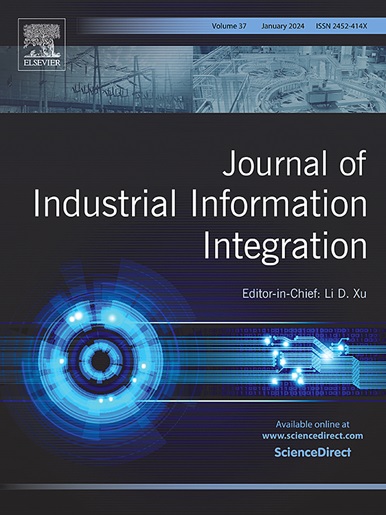SEAL+: A subgraph-enhanced framework for link prediction with graph neural networks
IF 10.4
1区 计算机科学
Q1 COMPUTER SCIENCE, INTERDISCIPLINARY APPLICATIONS
引用次数: 0
Abstract
Link prediction is a critical research topic in network analysis, typically formulated as a classification problem where the goal is to determine whether a link exists between a pair of nodes (denoted as 1 in existence and 0 for non-existence). In most existing works, the feature vectors of a pair of nodes are combined to obtain the feature vector representing the link between them; these feature vectors (or embeddings) are constructed using graph neural networks (GNNs). This paper uses a GNN-based link prediction method called EAL as the baseline. EAL consists of an Encoder and a Decoder. A significant challenge in EAL is that the feature vector extracted by the GNN can be identical for different pairs of nodes. To address this issue, we propose leveraging the concept of subgraphs to enhance link prediction performance. To this end, the Encoder is equipped with subgraphs, forming the SEAL framework. One limitation of SEAL is that it generates identical link representations for different links when the embeddings of the nodes involved are the same. To overcome this limitation, the Decoder of SEAL also uses the subgraph information, resulting in the novel framework SEAL+. We evaluate these two frameworks against baseline methods using various metrics, demonstrating their superiority. Specifically, SEAL+ achieves average improvements of 10.25 %, 17.25 %, 3.75 %, and 4.65 % in terms of accuracy, F1-Score, average precision, and area under the precision-recall curve, respectively, compared to the SEAL.
SEAL+:一种用于图神经网络链接预测的子图增强框架
链路预测是网络分析中的一个关键研究课题,通常被表述为一个分类问题,其目标是确定一对节点之间是否存在链路(表示存在1,表示不存在0)。在现有的大多数工作中,对一对节点的特征向量进行组合,得到代表它们之间联系的特征向量;这些特征向量(或嵌入)是使用图神经网络(gnn)构建的。本文采用一种基于gnn的链路预测方法EAL作为基线。EAL由一个编码器和一个解码器组成。在EAL中面临的一个重大挑战是,GNN提取的特征向量对于不同的节点对可能是相同的。为了解决这个问题,我们建议利用子图的概念来提高链接预测的性能。为此,编码器配备了子图,形成SEAL框架。SEAL的一个限制是,当涉及的节点嵌入相同时,它为不同的链接生成相同的链接表示。为了克服这一限制,SEAL的解码器也使用了子图信息,形成了新的框架SEAL+。我们使用各种度量标准对这两个框架的基线方法进行了评估,证明了它们的优越性。具体而言,与SEAL相比,SEAL+在准确率、F1-Score、平均精密度和精密度-召回率曲线下面积方面分别实现了10.25%、17.25%、3.75%和4.65%的平均提高。
本文章由计算机程序翻译,如有差异,请以英文原文为准。
求助全文
约1分钟内获得全文
求助全文
来源期刊

Journal of Industrial Information Integration
Decision Sciences-Information Systems and Management
CiteScore
22.30
自引率
13.40%
发文量
100
期刊介绍:
The Journal of Industrial Information Integration focuses on the industry's transition towards industrial integration and informatization, covering not only hardware and software but also information integration. It serves as a platform for promoting advances in industrial information integration, addressing challenges, issues, and solutions in an interdisciplinary forum for researchers, practitioners, and policy makers.
The Journal of Industrial Information Integration welcomes papers on foundational, technical, and practical aspects of industrial information integration, emphasizing the complex and cross-disciplinary topics that arise in industrial integration. Techniques from mathematical science, computer science, computer engineering, electrical and electronic engineering, manufacturing engineering, and engineering management are crucial in this context.
 求助内容:
求助内容: 应助结果提醒方式:
应助结果提醒方式:


